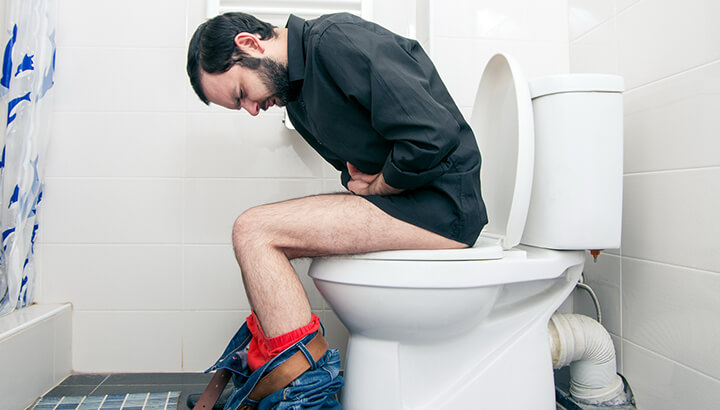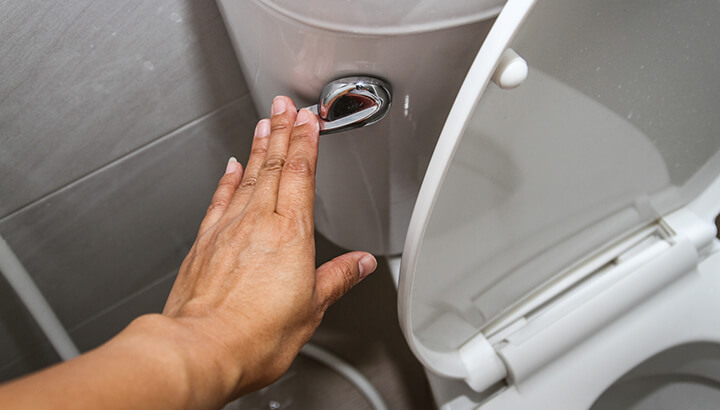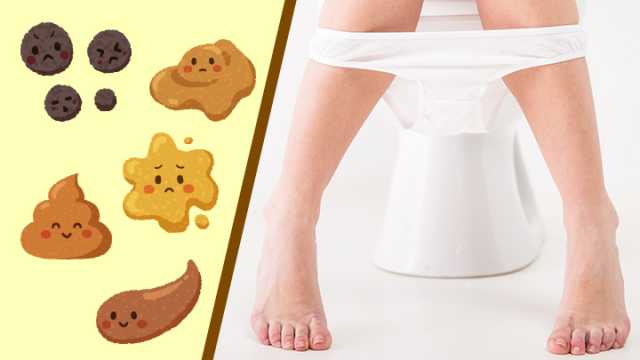When doctors at the Bristol Royal Infirmary Hospital in Bristol, England found that patients were reluctant to talk about the shape and nature of their stools, they devised a handy chart called the Bristol Stool Form Scale. This self-diagnostic chart helps patients discuss their bowel habits without becoming embarrassed. It is now being used all over the world as a measuring tool for bowel and digestive health.
How the Bristol Stool Chart can help you
The form of your stool depends on how long it spends in the colon. So, identifying which type of poop you have can give you an inside glimpse into your overall health. There are seven types of stools to consider:

Type one
These stools have spent the longest time in the colon and are often very difficult to pass. They resemble small nuts or hard lumps.
Type two
These stools are shaped like sausages but still have visible lumps. They are somewhat difficult to pass.
Type three
These stools are also sausage-shaped and better formed than type two, but with visible cracks.
Type four
These stools are like a smooth sausage or snake. They are well formed and easy to pass.
Type five
Although these stools are easy to pass, they are comprised of many soft blobs with clear edges.
Type six
These stools are soft, fluffy and mushy with ragged edges.
Type seven
If you have a type seven stool, it will be almost entirely liquid with no solid pieces.
What does healthy poop look like?
Type four is the easiest stool to pass and demonstrative of a healthy colon. Stools should glide out smoothly and cause no discomfort. When you sit down to use the bathroom there should be no delay. In other words, you should not get halfway through “Gone with The Wind” before you have a movement. In fact, you should not have much time for reading at all.
How many times a day should you poop?

Every time you eat, you should poop. This means that most people should poop from one to three times per day, not one to three times a week. Proper elimination is a sign of good colon health. Despite this, it is common for fecal matter to back up in the colon causing pain and discomfort. If your body is storing excrement, something is wrong. Symptoms may include headaches, bad breath and skin problems. If your fecal matter backs up it can cause a traffic jam in your colon allowing the body to re-absorb toxins it was trying to eliminate. A diet rich in whole foods and plenty of filtered water helps to keep constipation at bay.
Is your poop well-formed?
A well-formed stool (type four) is the result of proper consumption and digestion. On the other hand, if you consume a diet low in fiber and high in processed foods, your stools will be malformed. Healthy stools do not contain undigested food parts. If they do have undigested parts, it usually means that we chewed our food too quickly or we have insufficient acid for the breakdown of food parts. Many people in America are hooked on antacids which actually result in a depletion of stomach acids. To counter this, try drinking warm lemon water in the morning.
Why does poop float?
Floaters are good, as they indicate a healthy amount of fiber and essential fatty acids. Most people are lacking in healthy fats, and this will cause stools to sink immediately or be malformed. Contrary to what you may think, not all fats are bad. Healthy fats are, in fact, essential. If your stools are sinking like a torpedo rather than hanging around at the top of the surface, consider adding some ground flax to your daily diet. It goes great in cereal, salads or smoothies.
Always look in the toilet bowl

Go on… take a peek the next time you use the bathroom. If your stool is less than perfect, work on your diet. In the end, what comes out your back end is the result of what you put in your front end. Keep this in mind as you make food choices.









